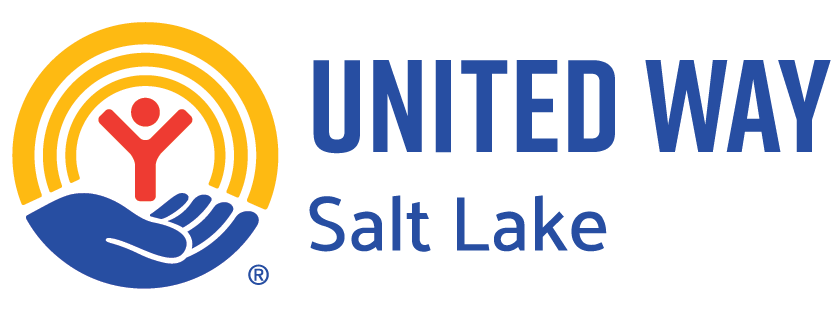 Bill Crim
Bill Crim
President & CEO, United Way of Salt Lake
Every day, in classrooms in our state and across the country, thousands of kids get left behind because adults fail to take advantage of opportunities that could change the trajectory of their lives forever.
We are incredibly proud that in Utah, the status quo is not good enough. We are proud we have data driven preschool providers focused on closing the opportunity gap, and we are proud our elected officials and business leaders are willing to innovate in order to improve educational outcomes that are no longer acceptable.
In August 2013, America’s first “Social Impact Bond” (SIB) or “Pay for Success” (PFS) transaction for early childhood education was established in Utah. Two years later, the results from the first cohort of children to receive high-quality preschool financed through the PFS transaction show that both the preschool intervention, and the PFS financing mechanism itself, have been successful, based on a review by an independent evaluator. This was only possible because state and local government, educators, parents, nonprofits, service providers, and the private sector came together to share in the responsibility of ensuring the well-being of our children and families here in Utah.
The foundation for Utah’s PFS transaction and later HB96, the Utah School Readiness Initiative, was built on a longitudinal study of outcomes for low-income children who attended a high-quality preschool program in Granite School District (GSD) which was subsequently expanded to private and nonprofit providers through support from the Kellogg Foundation.
As part of the study, children participating in GSD’s high-quality preschool program were assessed using the Peabody Picture Vocabulary Test (“PPVT”), an assessment that serves as an indicator for future academic success. For children who score two standard deviations below the mean, the test also serves as an indicator of the likelihood of later use of special education and remedial services. The PPVT has been recommended by the Committee on Developmental Outcomes and Assessments for Young Children convened by the National Research Council, and others as a reliable and valid assessment, but it is NOT being used in Utah’s PFS project as an assessment for special education eligibility.
Students who scored two or more standard deviations below the mean in the study were identified as likely to be referred to and potentially be eligible for special education services. All students’ academic achievement levels are tracked as they progress through school. The study demonstrated that between 25% and 33% of the low-income 3- and 4-year-olds in the 11 most impoverished schools in GSD tested below the level that would indicate potential eligibility for special education. However, when those students received high-quality preschool through GSD, 95 percent did not need special education, allowing the state to avoid special education costs for up to 13 years for each child.
- 737 low-income children who attended GSD high-quality preschool during a three-year period (i.e. 3 cohorts of children) were included in the longitudinal study
- Of these children, 238 tested as potentially eligible to use special education services during the study period
- At the end of the study period, only 11 students had used special education services through 3rd grade
- Low-income children in the study entered kindergarten at the top of their class, stayed at the top of their class, and have closed or significantly reduced the achievement gap in language arts and math. Results have now held for more than five years.
The significant cost avoidance demonstrated in the study created the conditions for a Pay for Success transaction, which was based on the same methodology.
Recently, a New York Times article called into question the methodology used in Utah, and made claims that no program could achieve the type of outcomes reported because the program wasn’t expensive enough. The article reflects longstanding debates in the early childhood field about both curriculum and testing methodology, and contains a variety of inaccuracies, misleading comparisons of data, and assumptions by early childhood experts that have no local knowledge or basis for their claims. While there is no perfect methodology or even one that would generate consensus within the early childhood field, Utah’s methodology was vetted both locally and nationally by early education and special education experts and leaders. We are confident in the process we implemented to lay out the program. We chose to act with the best data available, and are committed to learning and continuous improvement as we go. Our children need and deserve no less than this type of action.
It’s important to note that the NYT article misstates Utah’s use of the PPVT – again, it is NOT used to “screen for special education.” Data used in the article also presents a fundamentally misleading comparison—using data for all children regardless of income to compare with Utah’s data that only represents low-income children.
Utah’s cost per child is low, and Utah has a unique local context in terms of cost. We recognize that costs would be higher in most other places, but are proud that the model has worked here in Utah since 2006. Utah’s quality criteria are expressly stated in legislation, and our data going back to 2006 show that this program improves academic outcomes for kids and that their performance remains high well-beyond preschool. We are thrilled that we have achieved high-quality at a low cost, while replicating the model locally from one school district to private providers, nonprofits, charter schools and another school district.
We are proud that Utah’s School Readiness Initiative has brought together so many stakeholders from so many sectors around a common goal. We are proud that these partners were willing to use data collected over a long period of time to act and improve, rather than working in isolation and waiting for more money while thousands of kids continue to be left behind.
Utah is on the right track, and absolutely committed to learning and improvement as we go. We have chosen to give kids a strong start necessary to succeed in school and life. We have chosen to invest now in order to enjoy long-term savings, with a more vibrant state of healthy, achieving children and more stable families. We look forward to working with other stakeholders to continue to improve on this pioneering project.



